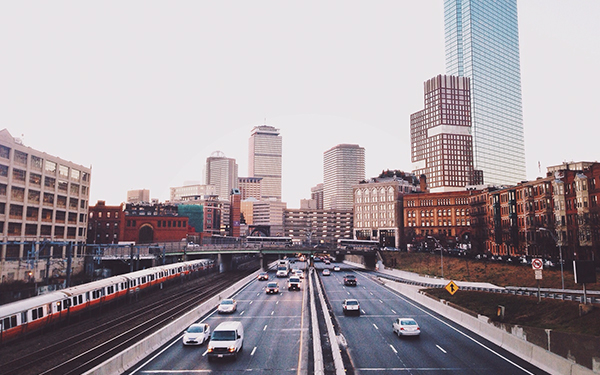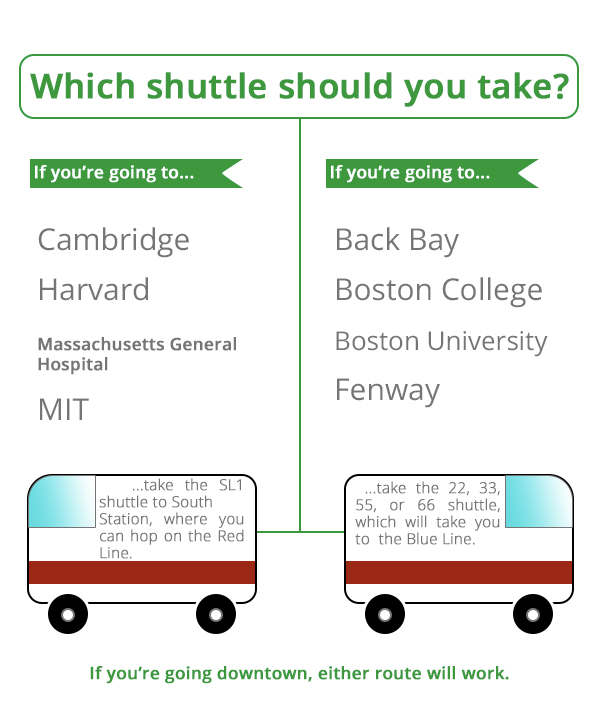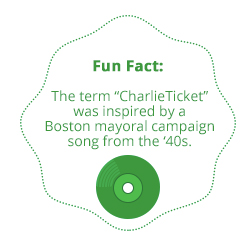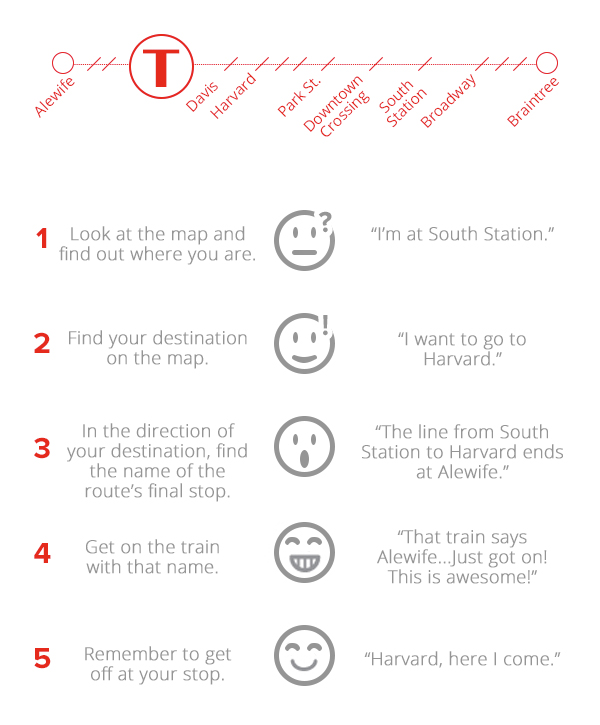
As far as American cities go, Boston is a geezer. It contains the nation’s oldest urban park (Boston Common), oldest major league baseball stadium (Fenway Park), and oldest subway, which started transporting passengers in 1897. That system has since blossomed into the Massachusetts Bay Transportation Authority—commonly known as the T—a network of water, bus, and rail routes that makes getting around Boston a cinch.
Here are five tips for using Boston public transportation for the first time.

1. Plot your route from the airport.
If you’re flying in, Logan International Airport will be the starting point for your Boston adventure. From here, hop on the Silver Line shuttle (labeled “SL1”) or a Blue Line shuttle (22, 33, 55, or 66). They’ll pick you up right outside baggage claim, and rides are complimentary.

2. Become a card-carrying tourist.
When you reach a transit station, find a kiosk and purchase a pass, known in Boston as a CharlieTicket. You can use cash or a credit card to add a dollar value, or opt for a LinkPass, which gives you unlimited rides for a day ($12) or a week ($19). A one-day LinkPass is worth the investment if you plan on taking five or more transit rides in a day. If you’re unsure, simply put $10 on your CharlieTicket and add more value as the need arises.
3. Get on the right train.
The Red, Orange, and Blue Lines comprise the underground portion of the T and are the most commonly used rail lines. As we mentioned earlier, the Silver Line is a shuttle bus that runs from the airport to the Red Line. The Green Line is a trolley with four branches—B, C, D, and E. If you take the Green Line, be sure to check the letters on the map to make sure you’re choosing the right branch.
Here’s how to pick the correct train, with an example from the Red Line.

You’ll notice that trains are labeled “inbound” or “outbound.” In general, inbound trains go toward downtown and outbound trains go away from downtown. Where do they change from inbound to outbound, and vice versa? That depends on the line.

4. Keep an eye on the time.
Unlike the systems in New York and Chicago, Boston public transportation doesn’t run all night. Service on the T ends between midnight and 1 a.m. Sunday–Thursday, and by 2 a.m. on Fridays and Saturdays. After that, you’ll have to rely on taxis or Uber. Buses and trains will be up and running and ready to take you to Boston’s many things to do the next day around 5 a.m.
5. Don’t be afraid to ask questions.
It’s OK to ask for help if you’re unsure about where you’re going. “Is this train going downtown?” is a question that the vast majority of locals—and all MBTA staff—will be happy to answer. And should you ever realize you’re going in the wrong direction, don’t worry. Just get off at the next stop, move to the other side of the platform, and hop on the next train that comes along. There’s always another one—unless, of course, it’s after 2 a.m.
